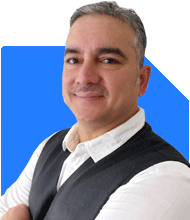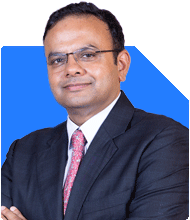Ramalingam Kalirajan |10881 Answers |Ask -Follow
Mutual Funds, Financial Planning Expert - Answered on May 26, 2024
He has an MBA in finance from the University of Madras and is a certified financial planner.
He is the director and chief financial planner at Holistic Investment, a Chennai-based firm that offers financial planning and wealth management advice.... more

I have investment in following funds and want to invest for 10-15 years and started investing 10,000 per month from jan 2024 in the following fund please suggest 1. Paragh parihk flexi fund-5000 per month 2.nippon small cap fund- 2000 per month 3.Icici direct nifty 50 index growth-2000 per month 4.icici pru balanced advantage direct growth-1000 per month
Portfolio Overview
Flexicap Fund - Rs. 5000 per month
A flexicap fund offers the flexibility to invest across market capitalizations. This allows the fund manager to adjust the portfolio based on market conditions, providing a balanced exposure to large, mid, and small cap stocks. This fund is suitable for long-term growth with diversified risk.
Small Cap Fund - Rs. 2000 per month
Small cap funds invest in smaller companies that have the potential for high growth. These funds can deliver significant returns over the long term but come with higher risk and volatility. Small cap funds are ideal for investors with a higher risk tolerance and a long investment horizon.
Index Fund - Rs. 2000 per month
Index funds track a specific market index, like the Nifty 50. These funds offer low-cost exposure to a broad market segment but lack the flexibility to outperform the index. In your case, the focus on index funds might limit the potential for higher returns that actively managed funds can provide.
Balanced Advantage Fund - Rs. 1000 per month
Balanced advantage funds dynamically allocate assets between equity and debt based on market conditions. This strategy aims to reduce risk while providing reasonable returns. These funds are suitable for investors seeking a balance between growth and stability.
Strengths of Your Portfolio
Diversification
Your portfolio is diversified across different types of funds, including flexicap, small cap, index, and balanced advantage funds. This diversification helps in spreading risk and maximizing returns.
Systematic Investment Plan (SIP)
Investing Rs. 10,000 per month through SIPs ensures disciplined investing. SIPs benefit from rupee cost averaging, which averages out the cost of investments over time and reduces the impact of market volatility.
Long-Term Horizon
A 10-15 year investment horizon is ideal for equity investments. This period allows you to benefit from the compounding effect, which can significantly enhance your wealth over time.
Evaluating Your Investment Strategy
Flexicap Fund
The flexicap fund in your portfolio offers flexibility and diversification. This fund can adjust its allocation to capitalize on market opportunities, making it a good choice for long-term growth.
Small Cap Fund
Small cap funds can provide high returns, but they are also more volatile. Given your long-term horizon, this fund can be a valuable part of your portfolio, but it requires a higher risk tolerance.
Index Fund
While index funds offer low-cost exposure to the market, they lack the ability to outperform the index. Actively managed funds, with skilled fund managers, can potentially provide higher returns by strategically selecting investments.
Balanced Advantage Fund
This fund provides a balanced approach, reducing risk through dynamic asset allocation. It offers stability and moderate growth, making it a good addition for risk-averse investors or as a stabilizing component in a diversified portfolio.
Potential Adjustments and Recommendations
Consider Actively Managed Funds
Replacing the index fund with an actively managed fund can enhance your portfolio's growth potential. Actively managed funds aim to outperform the market by leveraging the expertise of fund managers.
Review Direct Fund Investments
Direct funds can save on expense ratios, but they lack the professional guidance that regular funds through a Mutual Fund Distributor (MFD) provide. Investing through an MFD with CFP credentials ensures you receive professional advice, helping you make informed investment decisions and align your investments with your financial goals.
Rebalance Periodically
Regularly review and rebalance your portfolio to maintain the desired asset allocation. This involves selling some assets and buying others to keep your portfolio aligned with your risk tolerance and investment objectives.
Benefits of Actively Managed Funds Over Index Funds
Potential for Higher Returns
Actively managed funds aim to outperform market indices by making strategic investment decisions. Skilled fund managers identify growth opportunities, which can lead to higher returns compared to passive index funds.
Flexibility
Active fund managers can adjust portfolios based on market conditions, whereas index funds are tied to a fixed list of stocks. This flexibility can enhance returns and manage risks more effectively.
Risk Management
Actively managed funds can mitigate risks by diversifying investments and making strategic adjustments. This proactive approach to risk management can protect your portfolio during market downturns.
Advantages of Regular Funds Over Direct Funds
Professional Guidance
Investing through a Mutual Fund Distributor (MFD) with CFP credentials provides access to professional advice and support. This can be crucial in making informed investment decisions and achieving your long-term financial goals.
Ease of Transactions
Regular funds often come with additional services such as easier transaction processes and personalized financial advice. This support can save time and provide peace of mind.
Comprehensive Financial Planning
A Certified Financial Planner (CFP) offers holistic financial planning, considering all aspects of your financial life. This ensures that your investments are aligned with your broader financial goals and risk tolerance.
Monitoring and Adjustment
Stay Informed
Stay updated on market trends and economic indicators. Understanding market dynamics helps in making informed investment decisions and adjusting your strategy if needed.
Long-Term Perspective
Maintain a long-term perspective, focusing on your financial goals. Market fluctuations are normal; patience and discipline are essential for successful long-term investing.
Professional Guidance
Engaging a Certified Financial Planner (CFP) can add immense value. A CFP can provide personalized advice, ensuring your investments are aligned with your financial goals and risk tolerance.
Conclusion
Your current portfolio and investment strategy show a good mix of flexibility, growth potential, and stability. The combination of flexicap, small cap, index, and balanced advantage funds offers a diversified approach to long-term wealth creation. However, replacing the index fund with an actively managed fund and considering regular funds through an MFD with CFP credentials can further enhance your portfolio's growth potential and provide professional guidance.
Regular monitoring, rebalancing, and staying informed about market trends are crucial to maintaining a robust investment portfolio. Engaging a Certified Financial Planner can provide additional guidance and support, helping you stay on track to achieve your financial goals.
Best Regards,
K. Ramalingam, MBA, CFP,
Chief Financial Planner,
www.holisticinvestment.in
You may like to see similar questions and answers below
Advait Arora | Answer |Ask -Follow
Financial Planner - Answered on Aug 07, 2023
Abhishek Dev | Answer |Ask -Follow
Financial Planner - Answered on Aug 16, 2023
Ramalingam Kalirajan |10881 Answers |Ask -Follow
Mutual Funds, Financial Planning Expert - Answered on Apr 11, 2024
Ramalingam Kalirajan |10881 Answers |Ask -Follow
Mutual Funds, Financial Planning Expert - Answered on May 06, 2024
Ramalingam Kalirajan |10881 Answers |Ask -Follow
Mutual Funds, Financial Planning Expert - Answered on Nov 10, 2024
Dr Dipankar Dutta |1841 Answers |Ask -Follow
Tech Careers and Skill Development Expert - Answered on Dec 14, 2025
Nayagam P P |10854 Answers |Ask -Follow
Career Counsellor - Answered on Dec 14, 2025
Radheshyam Zanwar |6744 Answers |Ask -Follow
MHT-CET, IIT-JEE, NEET-UG Expert - Answered on Dec 14, 2025
Radheshyam Zanwar |6744 Answers |Ask -Follow
MHT-CET, IIT-JEE, NEET-UG Expert - Answered on Dec 14, 2025
Dr Dipankar Dutta |1841 Answers |Ask -Follow
Tech Careers and Skill Development Expert - Answered on Dec 14, 2025
Dr Dipankar Dutta |1841 Answers |Ask -Follow
Tech Careers and Skill Development Expert - Answered on Dec 13, 2025
Dr Dipankar Dutta |1841 Answers |Ask -Follow
Tech Careers and Skill Development Expert - Answered on Dec 13, 2025
Mayank Chandel |2575 Answers |Ask -Follow
IIT-JEE, NEET-UG, SAT, CLAT, CA, CS Exam Expert - Answered on Dec 13, 2025
Radheshyam Zanwar |6744 Answers |Ask -Follow
MHT-CET, IIT-JEE, NEET-UG Expert - Answered on Dec 13, 2025
Mayank Chandel |2575 Answers |Ask -Follow
IIT-JEE, NEET-UG, SAT, CLAT, CA, CS Exam Expert - Answered on Dec 13, 2025
























